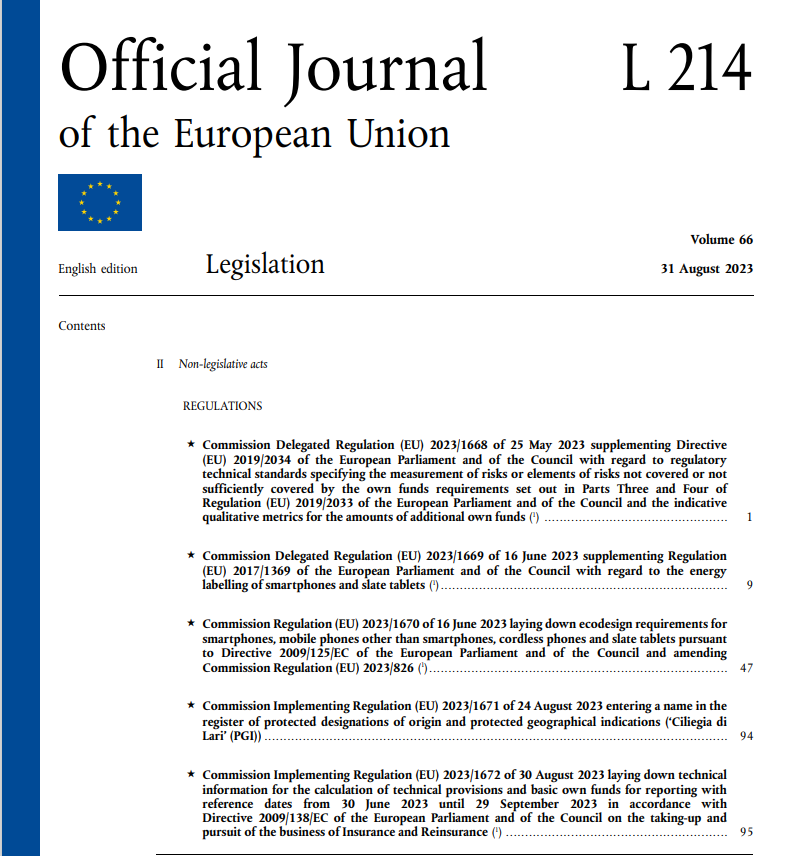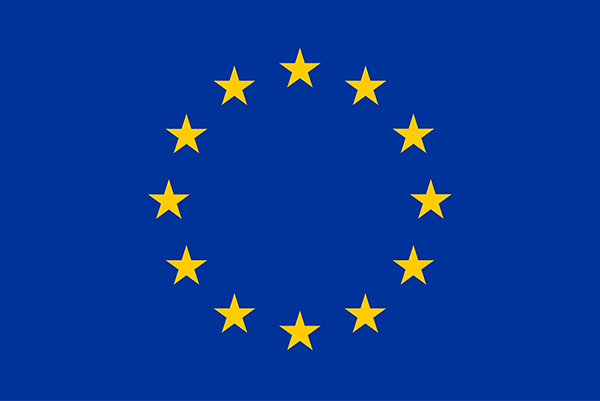- Industry
- Region
- Country / Region
On April 24, 2024, the European Commission launched a study exploring the possibility of digitizing and collecting the conformity assessment certificates of all CE-marked products into a database called the "Digital Solution for Conformity Verification" (DSCV). The objective of the DSCV is to facilitate market surveillance and customs control and to provide more accessible and reliable data on the CE marking of products. Relevant stakeholders, such as customs authorities, market surveillance bodies, certification bodies, notified bodies, manufacturers, distributors, importers, exporters, consumers, and managers of existing similar databases, were invited to participate in the study.
Click on the this link to view the original questionnaire, which was collected until May 17, 2024.
On January 31, 2024, the EU cybersecurity certification scheme on Common Criteria (EUCC), drafted by the European Cybersecurity Agency (ENISA), has been adopted by the European Commission as the first certification scheme within the EU Cybersecurity Certification Framework. The certification program will apply to all ICT products. While the implementation of the certification scheme is part of EU law, this cybersecurity certification framework is voluntary. The EUCC will eventually replace the previous national certification scheme established under the SOG-IS protocol. The certification program has been approved and will be published in the Official Journal (OJ) one year after the date of publication.
Click this link to view ENISA's press release regarding EUCC, click this link to view the original EUCC regulation.
On 1 December 2023, the European Commission published Commission Implementing Decision (EU) 2023/2669 amending the implementing decision (EU) 2022/2191 on harmonised standards for wireless communication devices used at or near the human body.
The harmonized standards EN 50360:2017/A1:2023 and EN 50566:2017/A1:2023 are used to cover the essential requirements set out in Article 3 of the Directive. The original EN 50360:2017 and EN 50566:2017 can be used until 1 June 2025.
Click on this link to view the original implementation decision.
This regulation shall enter into force on the date of publication. Click on this link to view the original article (EU) 2023/2444.
On October 4, 2023, the European Commission published Commission Implementing Decision (EU) 2023/2392 in the Official Journal of the European Union containing new harmonized standards in support of the Radio Equipment Directive. The "Implementation Decision" has now been implemented, and the key points are updated as follows:
- The cellular equipment standard EN 301 908-1 has been updated to V15.2.1, EN 301 908-1 V15.1.1 will expire on April 4, 2025, and the previous version, EN 301 908-1 V13.1.1, has already expired on September 29, 2023;
- The DAB equipment standard EN 302 077 has been updated to V2.3.1 and EN 302 077-2 V1.1.1 will expire on April 4, 2025.
Click the this link to view the original implementation decision.

According to the bill, smartphones and tablets placed on the EU market must display information about their energy efficiency, battery life, protection against dust and water, and protection against accidental drops. This is the first time that a product on the EU market has been required to display a repairability score.
Ecodesign Act (EU) 2023/1670
In order to improve the energy efficiency and durability of mobile phone and tablet products, strict requirements have been put forward for the maintainability, reliability and recycling of products through eco-design principles such as open repair rights, increased product transparency, and recycling.
According to the requirements of theEcodesign Act, manufacturers, importers or agents are obliged to provide critical spare parts to maintenance personnel within 5-10 working days until 7 years after the end of the sale of the product model on the EU market.
If a battery or back cover assembly is not available to the customer, the manufacturer needs to ensure that the product design meets the following requirements:
1. The cycle life is not less than 500 times, and after 500 times, there is at least 83% of the remaining capacity;
2. The battery cycle life is not less than 1000 times, and after 1000 times, there is at least 80% remaining capacity;
3. The product has IP67 dustproof and waterproof design.
The Act requires manufacturers, importers or agents to publish product repair manuals on their free websites to provide professional technicians or users with information related to the repair and maintenance of products, including product identification, disassembly diagrams, fault diagnosis information, necessary circuit connection diagrams, tag diagrams, and disassembly tool requirements.
In order to improve the durability of mobile phones and tablets, the bill requires that products must meet certain reliability requirements
1. Anti-drop design;
2. Mohs 4 hardness screen design;
3. IP44 dustproof and waterproof design
4. The battery cycle life is not less than 500 times;
5. Improve the battery management function and optimize the charging efficiency
6. Availability of operating system upgrades: at least 5 years after the product is placed on the market;
7. Professional repairers use any software or firmware required for replacement without discrimination.
Energy Efficiency Rating Labelling Act (EU) 2023/1669
According to the Act, all smartphones and tablets must be labelled with an energy efficiency rating and registered on the EU's public goods database EPREL before they can be placed on the market.

Energy efficiency labels for smartphones and tablets
In response to the two new EU Directives, the CTTL-Terminal Labs can provide a complete evaluation program for enterprises, and can contact xialijiao@caict.ac.cn if necessary.
On July 28, 2023, the European Parliament and the Council of the European Union published a new regulation on batteries and waste batteries, Regulation (EU) 2023/1542. The regulation aims to promote a circular economy in the battery industry by regulating all stages of the battery life cycle, including production, reuse, and recycling. The regulation includes labeling and information requirements for battery components and outlines targets for the recycling of used battery materials, as well as requirements for the carbon footprint of batteries (which does not apply to portable batteries). The regulation was codified on 12 July 2023, published in the Official Journal of the European Union on 28 July 2023, and will enter into force on 18 August 2023
- Chapter 13 of the Regulation, from 18 August 2025, all batteries shall bear a separate recycling mark, from 18 August 2026, the relevant labelling requirements of the Regulation shall be fully implemented, from 18 February 2027 all batteries shall have a QR code containing the battery information required by the Regulations;
- Chapter 11 of the Regulation (Removable and replaceable requirements for portable batteries and LMT batteries): 18 February 2027;
- Directive 2006/66/EC, which replaces this regulation, will be repealed from 18 August 2025.
Click on this link to view the original Regulation (EU) 2023/1542.
Following a public consultation on 24 May 2023, on 20 July 2023, the European Commission published an announcement numbered C(2023) 4823 final, postponing the implementation date of (EU) 2022/30 from 1 August 2024 to 1 August 2025. The announcement also amends the text description in the second paragraph of Chapter 1 of (EU) 2022/30 by changing the original text "traffic data and location data" to "traffic data or location data".
Click on this link to view the original European Commission announcement.
On 17 April, the European Union published a new version of Regulation (EU) 2023/826 on standby power consumption in the ErP series of directives, which will be mandatory on 9 May 2025 and replace the old Regulation (EC) 1275/2008 and (EC) 107/2009. The new regulations cover most small household appliances, IT equipment (excluding desktop computers and laptops), consumer entertainment electronics, electric furniture and home decoration equipment. Regulations require devices to have power management capabilities to meet energy consumption requirements for shutdown mode, standby mode, and network standby mode.
Click this link to view the original text.
On December 7, the European Union officially published the revised Directive (EU) 2022/2380 on universal chargers to supplement the specific implementation requirements of 3.3(a) of the RED Directive Directive 2014/53/EU for universal charging interfaces.
The Amendment Directive covers a total of 13 types of wireless devices, including smartphones, tablets, digital cameras, wireless headphones, handheld game consoles, portable speakers, e-books, keyboards, mice, portable navigation systems and laptops. According to the requirements of the new directive, all 13 types of equipment mentioned above must be equipped with a USB Type-C charging port in accordance with EN IEC 62680-1-3:2021 and can be charged using a charging cable that complies with the same standard, where devices that support fast charging should support the USB PD protocol in accordance with EN IEC 62680-1-2:2021. In addition, consumers and users may choose to purchase devices with unbundled chargers, and the manufacturer or seller should indicate whether the product is equipped with a charger with a specific mark on the packaging, indicating the charger power range requirements and the supported fast charging protocols.
The new directive will be mandatory in all EU member states from 28 December 2024, with the requirement for laptop devices to be mandatory on 28 April 2026, and new devices entering the EU market after the mandatory date should meet the requirements of the directive.
